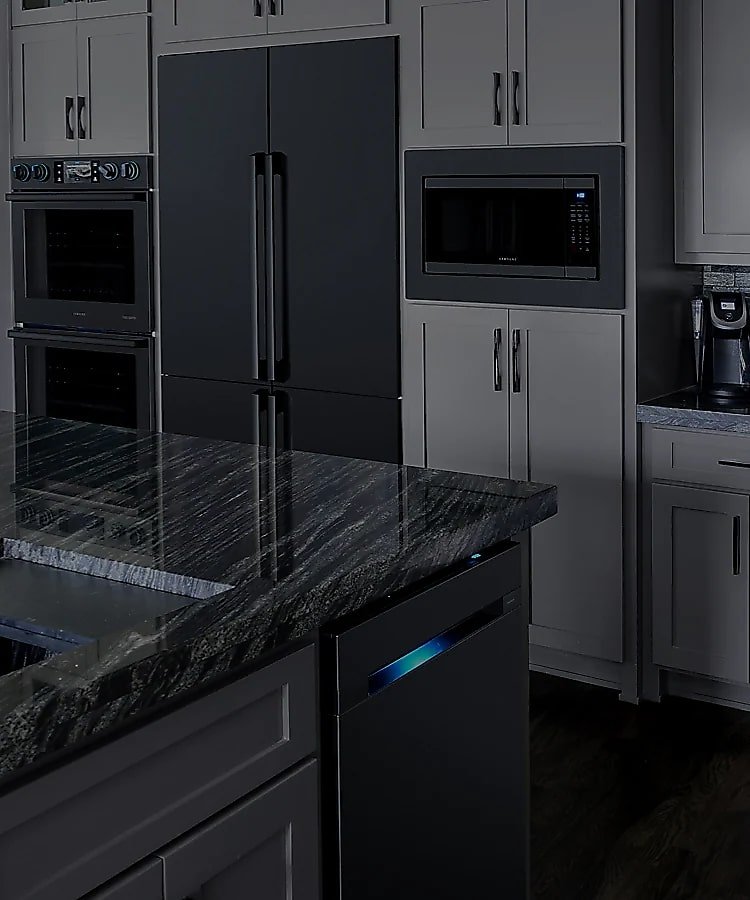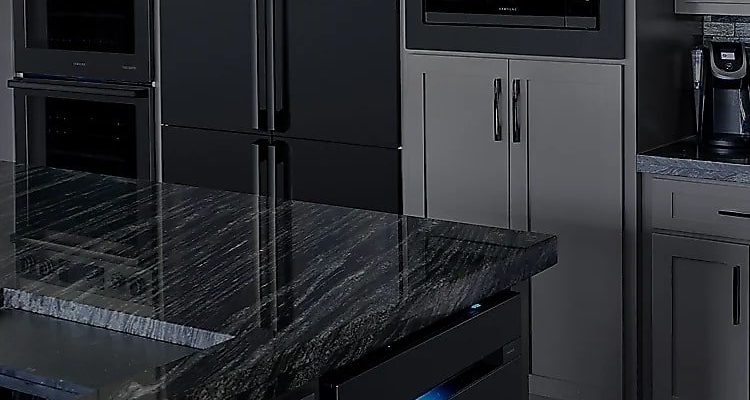
You might be imagining yourself as a detective, sifting through warranty paperwork looking for a secret code or loophole. Honestly, you’re not alone. So many folks get tripped up by the fine print when it comes to warranties, especially with a big brand like Samsung. Whether you’re moving houses, flipping a property, or just replacing your oven, knowing if you can transfer the warranty along to a new owner can mean peace of mind—or a big headache down the road.
Let me explain everything you need to know, in plain English, about whether you can transfer the warranty on Samsung kitchen appliances, what to watch for, and what actually happens behind the scenes.
How Samsung Kitchen Appliance Warranties Actually Work
Here’s the thing: Most folks assume a warranty is like a gift card—whoever holds it gets the perks. But with Samsung kitchen appliances (think fridges, ovens, ranges, dishwashers, and microwaves), the warranty usually works a little differently. The warranty is typically offered to the **original purchaser**. That means it starts the very day you buy your shiny new appliance, and it’s often tied specifically to your name and purchase info.
Samsung’s standard coverage normally includes things like:
- Parts and labor for a limited period (usually 1 year for most parts)
- Extra coverage on major components (like your refrigerator’s compressor, maybe up to 5 years)
- Repair or replacement if something fails because of a manufacturer defect—not user error
But here’s the catch: If you’re not the original buyer, you’re usually out of luck on using that warranty, unless Samsung specifically says otherwise. That little detail can make a big difference if you’re buying, selling, or inheriting a used Samsung kitchen appliance.
Can You Transfer Your Warranty to a New Owner?
You might be wondering, “Alright, but if I sell my Samsung refrigerator on Facebook Marketplace, does the warranty go to the buyer?” In most cases, **Samsung’s standard kitchen appliance warranty is non-transferable.** That’s a fancy way of saying only the original buyer can use it; the next owner usually cannot claim repair or replacement under the original warranty.
Samsung’s official stance (at least in the US and many other countries) boils down to this: the warranty is tied to the original purchase and doesn’t move with the appliance when it changes hands. So, if you’re the second owner—or even the third—it’s almost like starting from scratch, warranty-wise.
But every now and then, there are rare exceptions:
- If the **appliance was purchased through a special program or promotion** that specifically allows transfer
- If Samsung offers a **transferable extended warranty plan** (which is rare, but worth asking about if you bought extra coverage)
Honestly, for everyday used sales or hand-me-down situations, your best bet is to assume the warranty **does not transfer** unless you have written proof from Samsung that says otherwise.
Why Do Manufacturers Like Samsung Make Warranties Non-Transferable?
This might seem unfair at first glance. But manufacturers—including Samsung—have a few reasons for making their standard kitchen appliance warranties non-transferable. Let’s break them down.
First, it keeps things simple for troubleshooting and repairs. Samsung’s support staff can quickly pull up the purchase records, sync them with your registration, and start the claims process if your name matches their records. If ownership passed three or four times, tracking repairs or previous claims gets messy fast.
Second, it’s about limiting liability. If someone misuses or improperly installs an appliance, Samsung doesn’t want to be on the hook after it leaves the hands of their first customer. That’s especially true if the new owner never codes, resets, or pairs the appliance properly after moving it.
Finally, it helps discourage fraud and warranty abuse. If warranties transferred each time an appliance was resold, people could try to reset the purchase clock by faking sales or registrations.
So, while it can feel frustrating, there’s a method to the madness with Samsung’s policy.
Are There Any Exceptions to Samsung’s Warranty Transfer Rules?
Here’s where things get a little less black and white. While Samsung’s basic warranty policy is clear, a couple of rare scenarios might leave the door cracked open just a bit.
- If your appliance is covered by a **third-party extended warranty** (like one from your retailer, or a service contract from your credit card company), those warranties sometimes are transferable. You’ll need to check the fine print, and you may have to pair the new owner’s info or repair code to the contract.
- Some Samsung promotional offers (like those for luxury homes or bulk property sales) occasionally include wording that lets the warranty pass to a new owner. Again, this is very rare and will be spelled out in your paperwork.
If you’re in a unique situation—say, you bought a home with brand-new Samsung appliances already installed—try contacting Samsung directly with your model number, serial code, and a copy of your home’s purchase documents. Sometimes (but not always!) they’ll sync your info and let you access remaining warranty time, especially if you’re the first owner after new construction.
If you’re buying a used Samsung appliance, always check the warranty status first. Don’t just take a seller’s word for it—troubleshoot by asking for the original proof of purchase, serial code, and check directly with Samsung.
What Happens If You Need a Repair as a Second Owner?
Let’s say you just snagged a gently used Samsung oven for half the original price. Now, a month later, the display won’t reset or pair up with the controls properly. What are your options?
Here’s the honest answer:
- If Samsung’s original warranty is non-transferable (which it almost always is), you’ll pay for parts and labor yourself.
- If there’s a third-party warranty, you might still have a shot at free repairs—just make sure to transfer the contract officially, usually by resetting the owner code or providing proof.
- You might find local repair shops willing to diagnose and fix issues, though you’ll cover all costs.
It’s always worth calling Samsung support for troubleshooting advice, even out of warranty—they can often walk you through a hard reset, battery swap (for things like powered touch panels), or other simple DIY fixes. But for anything major, plan on paying out-of-pocket.
Tips for Selling or Buying Samsung Kitchen Appliances
If you’re planning to sell or buy a used Samsung kitchen appliance, a little homework goes a long way. Here are some real-world tips to make your life easier, learned from years of reader stories and my own missteps:
- Ask for the original proof of purchase—not just a photo, but the actual paper or emailed receipt. Samsung will only honor the warranty for the original buyer.
- Check the age of the appliance and compare it to the typical warranty period (usually 1–5 years, depending on the component).
- Double-check for any codes or service tags if the appliance had recent repairs—sometimes recent service extends coverage, but only for the original buyer.
- Don’t expect to transfer the warranty as a selling point. Instead, focus on the appliance’s real condition, age, and any recent maintenance. Buyers appreciate honesty—and surprises later lead to headaches.
Truthfully, most folks are just looking for a working oven, fridge, or dishwasher at a good price. But having all the info up-front saves hassle.
Alternatives: How to Protect Yourself Without a Warranty
So what if you’re stuck with a Samsung kitchen appliance and no warranty? Don’t panic. There are a few ways to safeguard your investment:
- Consider purchasing a third-party warranty or service plan—companies like SquareTrade, Asurion, or even some major retailers offer post-purchase protection for used appliances, though these plans can be expensive or have lots of fine print.
- Keep up with regular maintenance. Clean filters, check seals, and keep an eye on performance—catching problems early makes troubleshooting cheaper and simpler.
- Learn simple DIY fixes like resetting electronics, syncing new remotes, or replacing batteries in digital control panels. Samsung’s user manuals are surprisingly easy to follow for basic tasks.
- Find a good local repair shop—sometimes their rates are way better than brand-authorized service centers, especially if you’re out of warranty anyway.
Honestly, the peace of mind you get from a little preparation more than makes up for the lack of an official Samsung warranty.
Comparing Samsung’s Policy to Other Brands
You might be wondering—do other kitchen appliance brands let you transfer warranties? Samsung certainly isn’t alone with its “non-transferable” stance. Let’s see how a few competitors stack up:
- LG: Like Samsung, LG’s kitchen appliance warranties are almost always non-transferable and tied to the original buyer.
- Whirlpool & KitchenAid: Non-transferable by default, though third-party “protection plans” may be transferable in special cases.
- GE Appliances: Similar story—standard factory warranties stick with the original purchaser, not the appliance.
In rare instances, premium brands (like Sub-Zero or Wolf) let warranties move to new owners, but only if you follow specific steps—for example, registering the appliance and showing all prior service records. So, Samsung’s approach isn’t unusual in the kitchen appliance world.
The Bottom Line on Samsung Kitchen Appliance Warranty Transfers
Passing your Samsung fridge or oven to a new home can feel bittersweet—especially if you’ve still got time left on the warranty clock. The truth is, **Samsung kitchen appliance warranties almost never transfer to new owners.** The coverage is designed for the original buyer only, and you’ll usually need the original purchase receipt to make a claim.
If you’re buying used, assume repairs and troubleshooting will be your responsibility, unless you score a rare third-party plan with official transfer instructions. Sellers, don’t oversell the warranty angle. Instead, focus on the real health of your appliance and be upfront if the new owner will be flying solo.
At the end of the day, being clear about warranty limits saves everyone time and frustration. Whether you’re a seller, a buyer, or just a curious owner, a little homework goes a long way. And if you ever feel lost in the fine print, don’t be shy—just call Samsung support, ask about your serial code, and let them walk you through what’s actually covered (and who can claim it). Happy cooking!
